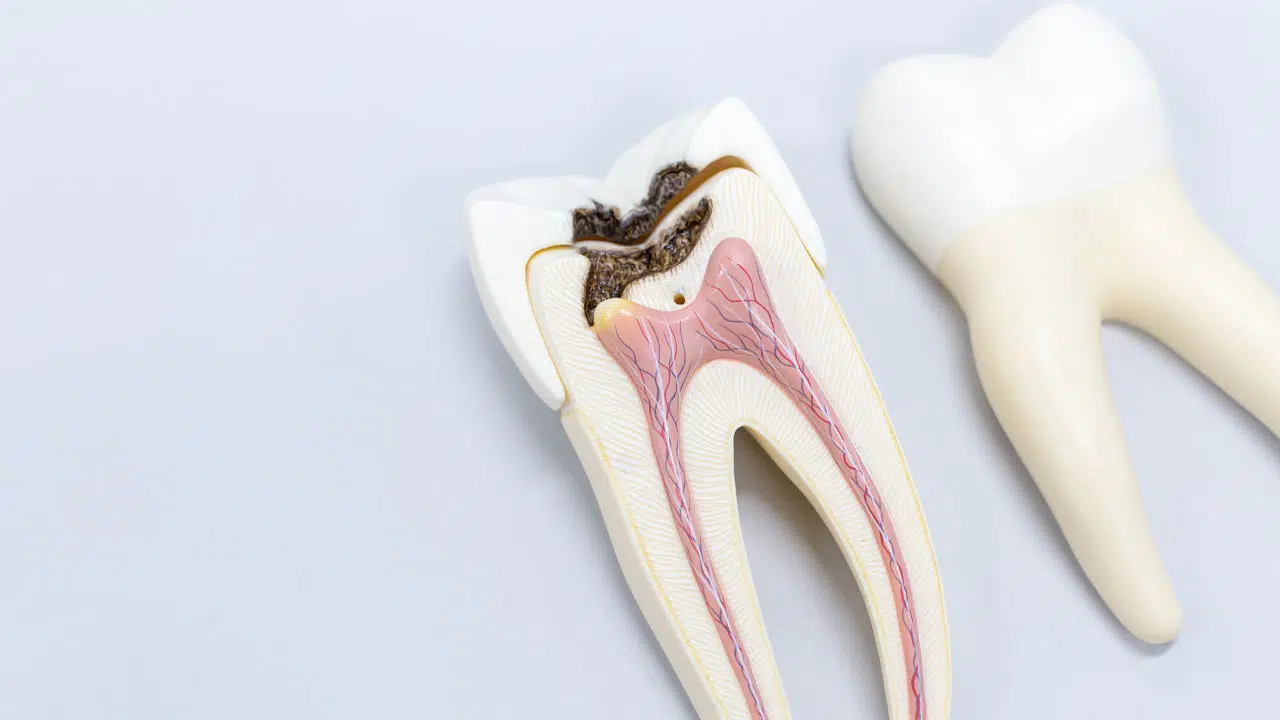
The root canal is a common dental procedure that saves teeth from extraction. Root canals are necessary when an infection or injury affects the tooth’s pulp. The procedure removes the affected pulp and reseals the tooth. The benefits of saving your original tooth include retaining your natural smile, faster recovery time, and no need for artificial tooth replacement options.
Why Get a Root Canal?
Tooth pulp can be damaged in a number of ways. Deep tooth decay from an untreated cavity can reach the pulp, causing infection. A deep filling can reach the pulp and injure it, and even trauma to the face can cause inflammation in a tooth’s pulp. When left untreated, the whole tooth will die and need to be extracted.
- Symptoms. If you experience pain while chewing, inflamed gums, tooth discoloration, or a gum boil (abscess), you may need a root canal. Contact your dentist if you experience one or more of these symptoms. They can examine your tooth to determine whether you require a root canal.
- If left untreated. The infected pulp that goes untreated decays the tooth to the point of an abscess or an infection beyond your tooth. A tooth abscess is a pocket of pus caused by an infected tooth. If the tooth decay reaches this point, the tooth will need to be removed. It is more cost-effective and less painful to have a root canal done.
The Root Canal Procedure
A root canal begins with X-rays that determine the extent of the decay. Then the dentist applies a local anesthetic to numb the area. If you deal with significant dental anxiety, talk to your dentist about sedation options.
The next step is to make an opening in the tooth’s crown, also known as the visible part that you brush. The opening goes deep enough into the tooth to afford access to the infected pulp and root canals. Dentists use small tools called endodontic files to remove and clean the infected areas.
The dentist shapes the newly cleaned-out area to accommodate a filling. In cases where the tooth cannot adequately support the filling, a small post will be implanted into the tooth. This restoration method is called post and core and helps keep the tooth in place. Your dentist covers the tooth with a crown for additional protection at the end of the procedure.
The whole process typically takes two visits to the dentist. Root canals are perceived as painful procedures, but in reality, they are no more uncomfortable than an average filling.
Root Canal or Tooth Extraction
Root canals minimize dental procedures and expenditures. When compared to tooth extraction, a root canal is significantly less invasive and requires fewer dental visits.
Tooth extraction means an accompanying tooth replacement. This equates to more dentist appointments for dental bridges, partial dentures, or dental implants. Root canals have a quicker healing process and are often less painful than healing from a tooth extraction. Plus, saving your natural tooth retains your natural bite.
Some situations require tooth extraction, but it is better to save your tooth and have a root canal when possible. Talk with your dentist to find out which procedure is right for you.
Prevent Root Canals With Good Dental Hygiene
While root canals are preferable to tooth extraction, it is best to prevent tooth decay. Biannual dentist appointments will catch any oral hygiene concerns before they progress to the tooth’s pulp. Brushing twice a day and flossing once a day removes plaque which is responsible for initiating tooth decay.
Contact Valley Dental Care today to schedule your dental appointment. We have locations in Aurora and Oswego to meet your needs.

